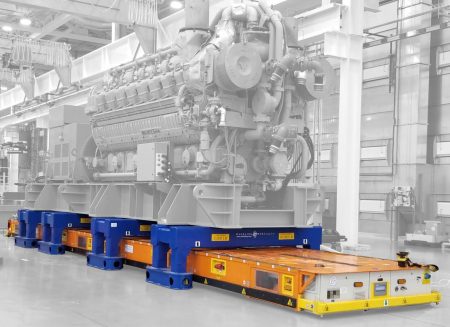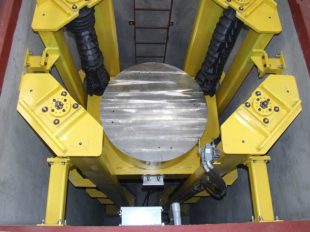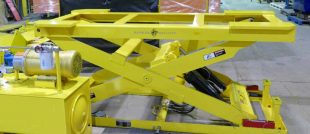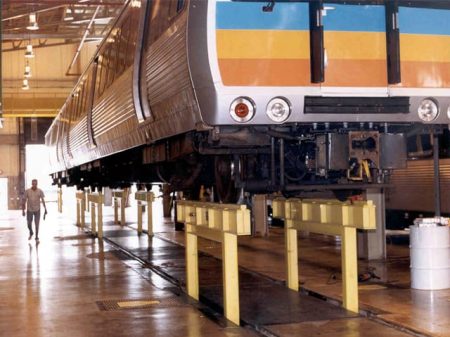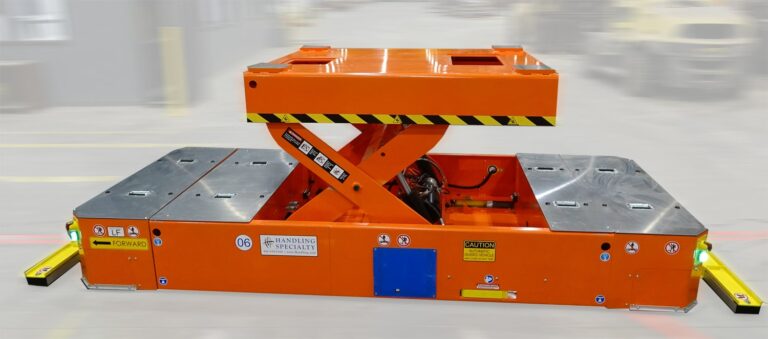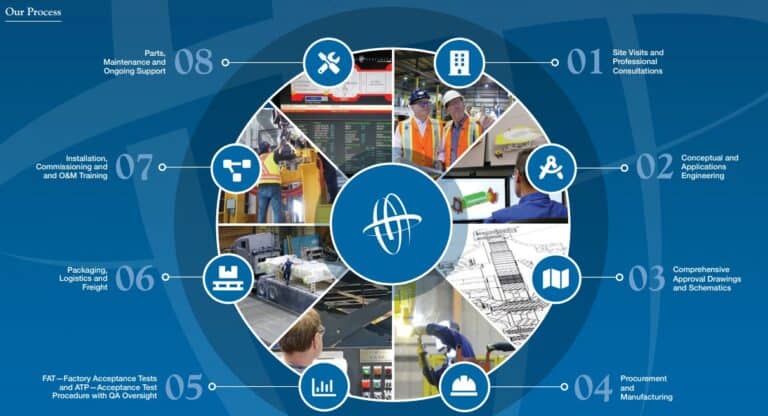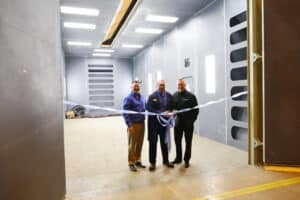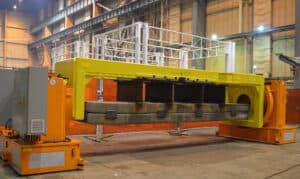Advanced technologies are crucial in enhancing material handling in assembly and maintenance repair operations (MRO). In this context, in-floor lifting systems are a game-changer, revolutionizing how we move and position heavy loads in factories. These innovative systems offer many benefits, significantly boosting business operational efficiency.
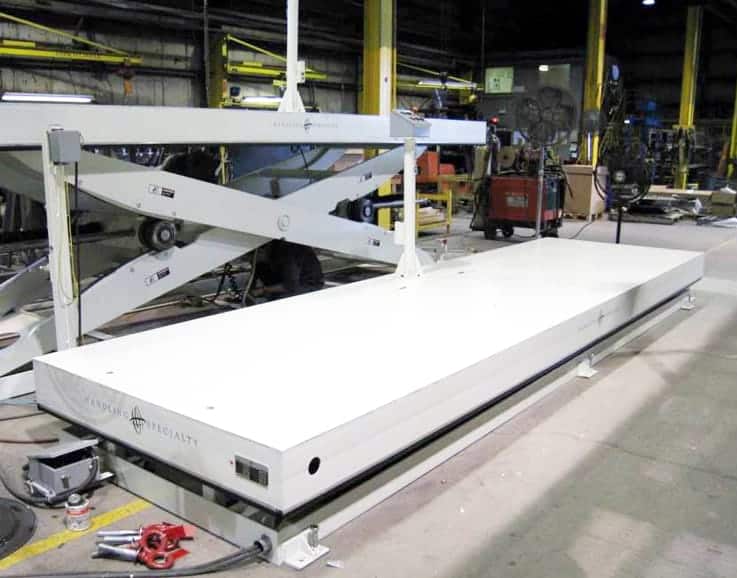
The Evolution of In-Floor Lifting Systems
The evolution of material handling has been a journey driven by the pursuit of better efficiency, safety, and productivity. To comprehend the evolution of in-floor lifting systems, we must delve into the innovative ideas that paved the way for these modern solutions. These systems represent a leap in engineering and automation, effectively addressing the challenges of today’s industries.
From Manual to Automated: The Transformation of Lifting Solutions
The second half of the 20th century saw a significant change towards automation in material handling. This brought about early assembly lines, which changed manufacturing and increased throughput. However, these changes also created new problems, like safety issues and the need for special training for operators. Because of this, people looked for safer and better solutions, which led to the creation of advanced lifting options like overhead cranes and, later, in-floor lifting systems. These systems show a shift towards automation, accuracy, and better safety in the workplace.
The Mechanics of In-Floor Lifting Systems
In-floor lifting systems are a sophisticated means of material movement. They are meticulously engineered to lift heavy loads with utmost safety and efficiency. Understanding the intricate mechanics of these systems is crucial to appreciating their operational excellence. These systems are equipped with advanced components that facilitate the precise lifting, lowering, and positioning of heavy loads.
Understanding the Engineering Behind In-Floor Lifts
In-floor lifting systems use robust hydraulic or electromechanical systems to lift heavy objects for assembly, inspection, and MRO activities. These lifting systems are installed beneath the floor of the building, with the platform level with the floor, and can be walked and driven over when not in operation. Hydraulic systems use pressurized fluid to lift loads, which offers a lot of power and allows for precise control. Electromechanical systems, on the other hand, use electric motors and mechanical parts. They are exact, quiet, and save energy. Both systems have their benefits. The choice between them depends on the specific needs of the individual task.
Hydraulic vs. Electromechanical Systems: Comparing Technologies
The choice between hydraulic and electromechanical in-floor lifting systems depends on several important factors, including safety. Hydraulic systems, while they may leak hydraulic fluid, are solid and well-built, making them suitable for lifting heavy loads. They are designed with built-in safety features like fall safes and limit switches that won’t allow the unit to experience a sudden drop. On the other hand, electromechanical systems provide better precision, require little maintenance, and operate more cleanly. They are often the best choice in places where accuracy, quietness, and care for the environment matter the most. Both systems can include specialized tooling such as turn tables. Ultimately, you must carefully consider your needs to choose the best technology. By looking closely at the advantages and disadvantages of each system with a trained technical salesperson, you can find the best solution to improve your material handling tasks and gain a competitive edge.
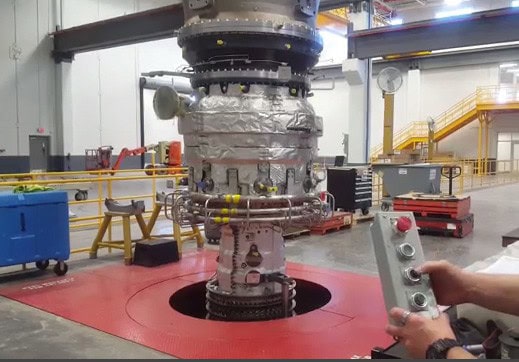
Key Industries Benefiting from In-Floor Lifts with Case Studies
In-floor lifting systems are helpful and efficient, which is why many industries use them. They help with tasks in manufacturing, assembly lines, and heavy industries and improve how materials are handled and assembled. Let’s look at key industries where in-floor lifts help boost productivity, safety, and operational efficiency.
Automotive Industry and In-Floor Technology
The automotive industry uses assembly lines, heavy loads, and complicated manufacturing. In-floor lifting systems are now being used to make things easier. These lifts safely and efficiently lift and position technicians during assembly. They can be customized for different operations like lifting vehicle models and production layouts, making them very useful for this industry. By adding in-floor lifts to their production lines, automotive manufacturers can improve their throughput, lower injury risks, and create a smoother manufacturing process.
How the Aerospace Sector Utilizes In-Floor Lifts
The aerospace industry relies on precision, control, and often explosion-proof lifts. In-floor lifting systems are essential in meeting these tough needs. They help assemble, test, and maintain aircraft engines by safely lifting wings, fuselages, and engines. In maintenance hangars, in-floor lifts let workers reach the underside of the aircraft easily, making inspection and repair simpler. This easy access and precision of these systems helps the aerospace industry maintain its high safety and quality standards.
In-Floor Systems in Rail and Energy Sectors
The rail and energy industries deal with large and heavy parts in demanding settings. In-floor lifting systems are very important in these fields. They can lift heavy weights and adjust to difficult conditions. In rail maintenance shops, these lifts help raise and move locomotives and train cars for fixes and checks. They are key for keeping rail service safe and efficient. The energy industry, especially in power generation and oil and gas, also uses these systems. They help set up and maintain heavy machines like turbines and generators at floor level, increasing ergonomics. Besides being practical, in-floor lifting systems also help with sustainability. They can improve energy efficiency and support better working habits. This is important for reducing the carbon footprint in these industries.

Advantages of In-Floor Lifting Systems
In-floor lifting systems have many benefits compared to traditional methods. They are a smart choice for businesses in various fields. These benefits do not just involve lifting and positioning heavy items. They also transform how workspaces are set up and used, leading to a safer, more ergonomic, efficient, and more productive workplace.
Enhancing Workspace Efficiency and Safety
In-floor lifts replace the need for overhead cranes or forklift trucks in many situations. This change helps free up valuable floor space while decreasing human error. It also makes the workspace less cluttered and more organized, especially in places with limited space. In addition, it improves workspace efficiency and helps use the area better.
Also, less movement of heavy machinery lowers the risk of accidents, making the workplace safer overall. In-floor lifting systems focus on safety. They have features that meet or exceed industry safety standards. This strong focus on safety and the benefits of using less machinery make in-floor lifts a smart choice. They are great for businesses that want to keep the work environment secure.
Improving Load Handling Through Precision and Control
In-floor lifting systems are great for lifting and handling loads. They offer better precision and control compared to older methods. Traditional ways involve swinging or moving heavy objects, which can be unsafe. In-floor lifts let you lift and lower items straight up and down. They can also be fitted with additional custom tooling to create a safe and ergonomic atmosphere. This keeps the load and nearby equipment and personnel safe from harm.
With in-floor lifts, there is less chance of damaging products and making mistakes when putting things together. This means better-quality products in the end. Overall, the precision and control of these systems help make work smoother and reduce material waste.
Achieving Ergonomic Work Environments with In-Floor Lifts
Employee well-being is a significant factor for success. In-floor lifting systems help employees by making the work easier. They reduce the need for strenuous lifting, bending, or uncomfortable positions. Employees can work at an ergonomic floor level, which improves efficiency and safety. This reduces strain and lowers the chance of getting muscle and bone injuries from work. The way in-floor lifts are made supports natural body positions. This leads to less fatigue, helping employees stay focused during their workday. Improving the workplace setup and in-floor lifts help create a healthier and more effective workforce.
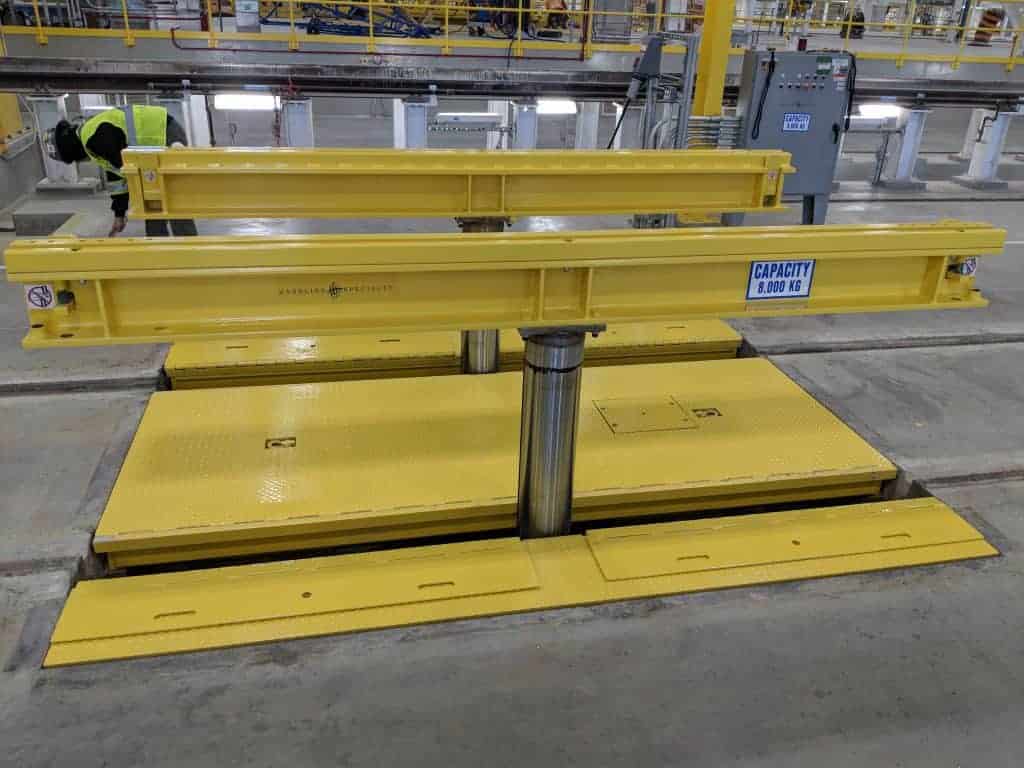
Implementing In-Floor Lifts: Considerations and Best Practices
Successfully using in-floor lifting systems requires proper planning and thought. It would be best to look at what your facility needs. You also have to pick the right kind of system. Many things can affect how well your investment works. The points below help ensure that your in-floor lifting system fits well with your work. This way, you can get the most benefits and enjoy lasting value.
Assessing Facility Requirements for Installation
Before installing an in-floor lift, you must check your facility’s layout. Look at the space you have and how your workflow goes. Utilize a professional technical salesperson to assist in envisioning your factory floor. This will help you choose the right type and size of lift and where to place it. It’s important to consider the weight and size of the loads you lift. Also, consider how high you need to lift and how often you do so.
Additionally, do you need to rotate, tilt, or upend the product for better ergonomics? By looking at these details, you can select a system that fits your needs and works well with your setup. Understanding your facility’s layout and workflow is key. It helps you put the lift in the best spot to reduce travel time, improve traffic flow, and ensure it fits in smoothly with your current system.
Conclusion
In-floor lifting systems have changed how we handle materials in many industries. They make operations more efficient, ergonomic, safe, and easily controlled. With new advances in engineering and technology, these systems serve many fields like automotive, aerospace, rail, and energy. Their accuracy and user-friendly custom designs are essential in today’s workplaces. Setting up in-floor lifts takes careful planning and routine maintenance to stay reliable over time. Case studies show that these systems have significantly impacted manufacturing processes. Using in-floor lifting technology is not just a trend but a must-have for assembly factories that want to be better and more productive.
Frequently Asked Questions
What Is the Initial Cost of Installing an In-Floor Lifting System?
The cost of installing an in-floor lifting system can vary depending on its size, type, and the installation materials needed. At first, it may cost more than regular methods. However, in the long run, the operational costs can be lower. This is because the system can save money by being more efficient.

